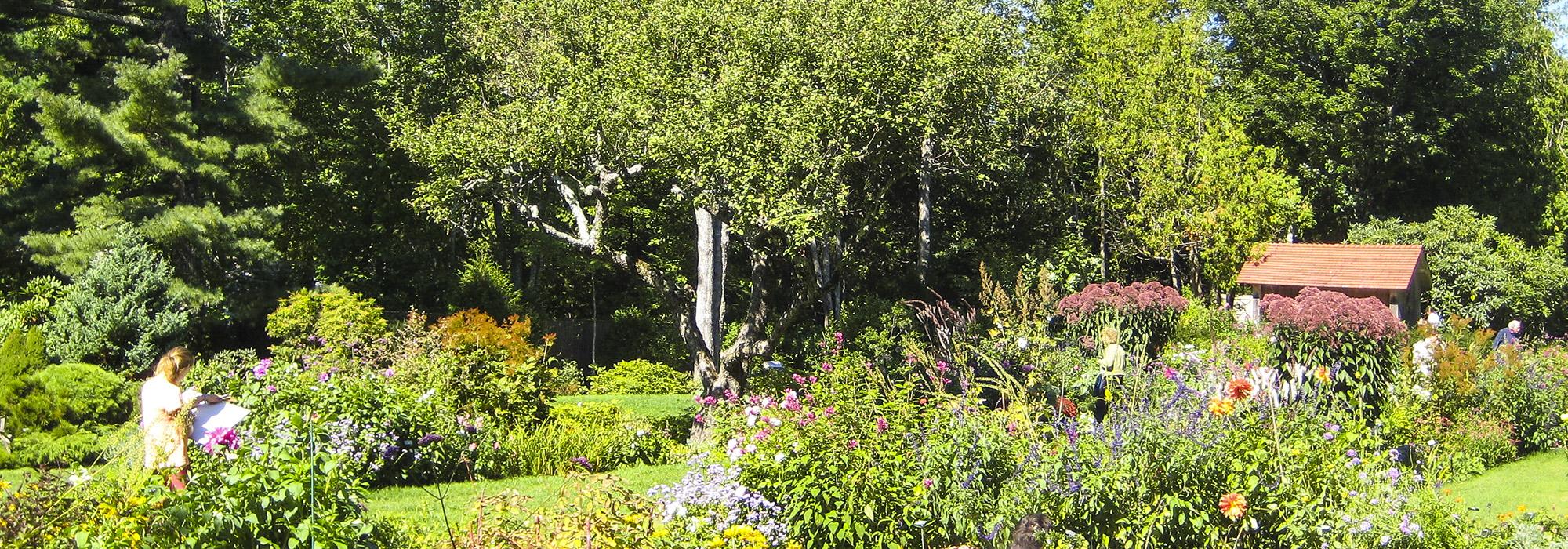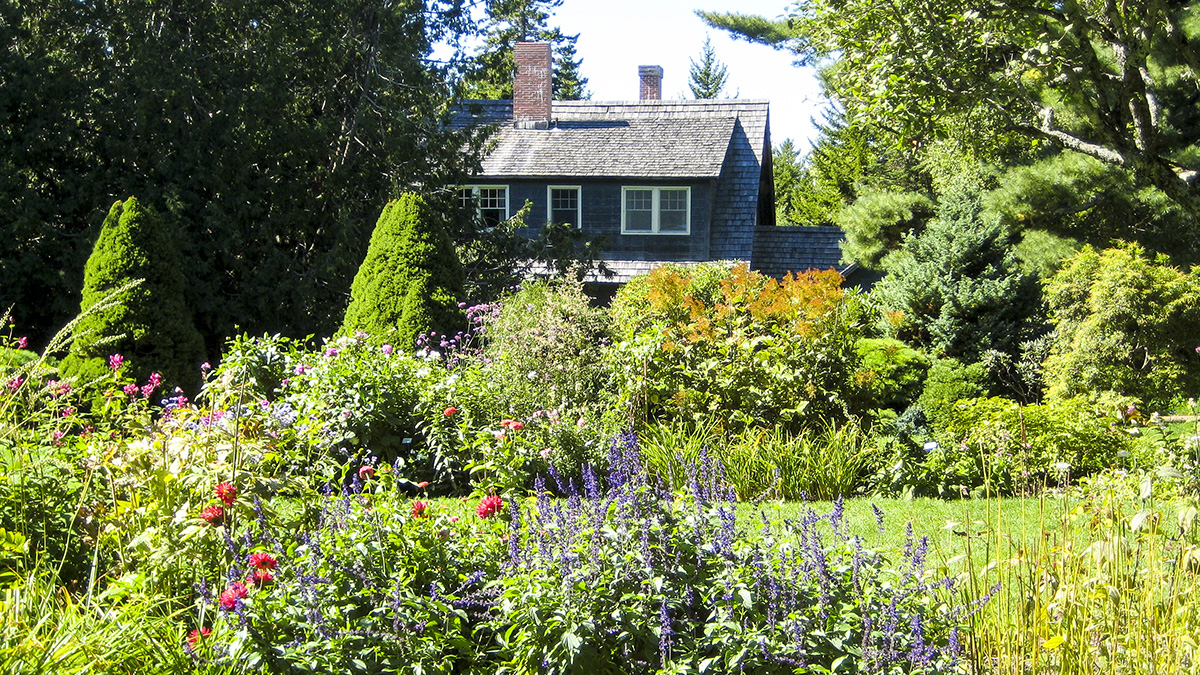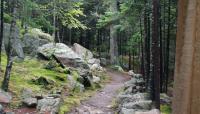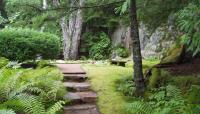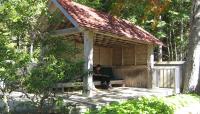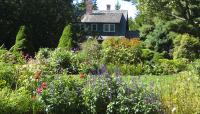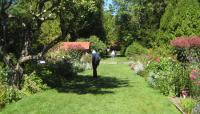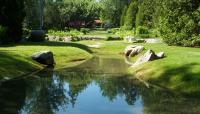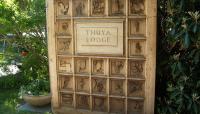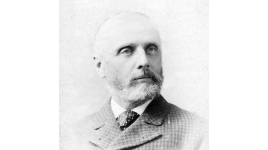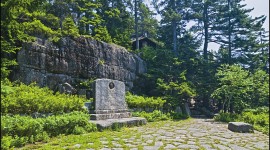Landscape Information
In 1912 Boston-based landscape architect Joseph Henry Curtis built Thuya Lodge on Mount Desert Island as a summer retreat. The rustic home, on a hillside overlooking Northeast Harbor, is encircled by native woods full of northern white cedar, or Thuya occidentalis. Curtis focused his attention primarily on designing the approach to his house from the harbor, building hillside paths called Asticou Terraces.
Following Curtis’ death in 1928, the property reverted to a trust directed by his friend Charles K. Savage, who over the next 37 years greatly expanded the garden landscape. The semi-formal herbaceous garden, based on Arts and Crafts, English precedents, is full of vibrant annuals and perennials, such as rhododendrons and mountain laurels. Structured upon a central axis with cross-axes, the flower borders edge a narrow, rectangular green that is flanked by a raised, rustic pavilion to the north and a shallow reflecting pool to the south. Savage and Augustus Phillips designed the carved cedar and mahogany entrance gates which depict native Maine flora and fauna. The garden owed much of its design to Beatrix Farrand, who contributed plantings from her own gardens at Reef Point when that estate was dismantled in 1956. Farrand also contributed the azaleas that Savage used to construct the Asticou Azalea Garden, which is connected to Thuya by a woodland trail. These gardens and the Asticou Terraces are part of the public 140-acre Mount Desert Land and Garden Preserve.



